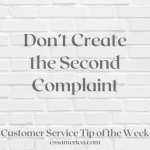According to the article Physician Practices Seek Patient Satisfaction Surveys As Obamacare Emerges, payments for physician practices could be based in part on the patient experience – similar to what’s already happening for hospitals and home health providers.
“If you look at today’s environment under the ACA, patient experience is going to become more important,” said Todd Evenson, vice president of consulting services and data solutions at MGMA. “It is not clear what vehicle they are going to use as to how quality is evaluated but there will likely be clinical as well patient experience components the value equation.”
If this turns out to be anything like the hospital-focused HCAHPS evaluation tools for patient satisfaction, there will be a number of survey attributes dealing with communication, feeling cared for, frequency of activities, and consistency of service. They’ll ask about people, processes, and facilities when gauging the patient experience. The physician practice surveys will measure physician group v. physician group as well as how well an individual entity improves its own performance over time.
Therefore, physician groups should prepare by learning some of the key lessons of HCAHPS. It’s about getting ALL staff to ALWAYS introduce themselves, listen to the patient, and convey they care. It’s about having consistency from part-time to full-time staff, regardless of time-of-day or day-of-week. It’s about getting customer service standards in place, best practices identified and implemented, about hiring people with the natural inclination to be patient-focused, and it’s about constantly monitoring and improving today to get ahead of the ACA curve of tomorrow.
Find the gaps in performance today to begin moving toward the consistency needed tomorrow.
Did you like this post? Here are other Healthcare-related posts:





















